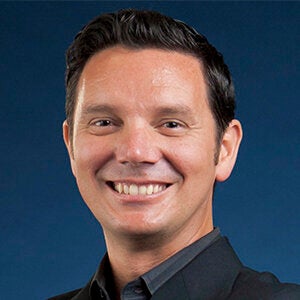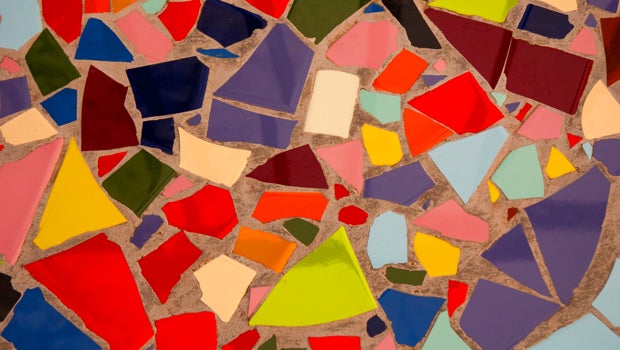June 2021 marks half a year since the end of 2020, a year punctuated by the COVID-19 pandemic, economic turmoil and an epidemic of racial injustice. In that year of crisis, a phrase emerged capturing many hopes for recovery: “build back better.” With 2020—thankfully—receding into the past, what progress is being made to build back better?

It’s a question Jeffrey Sanchez-Burks has thought about extensively. The University of Michigan Ross School of Business Professor was recognized by the Aspen Institute Business & Society Program with an Ideas Worth Teaching Award for his course, +Impact Studio: Translating Research into Practice. The theme of the course in fall of 2020? Build back better. We spoke with Sanchez-Burks about his course, and how his vision for building back better calls for breaking disciplinary boundaries within academia, and between academia and the broader world.
![]()
The theme of the course in fall 2020 was “building back better,” a phrase often invoked to describe hopes for the response to COVID-19. How can cross-disciplinary design thinking like that utilized in your course contribute to meaningful post-pandemic progress?
These troubled times are requiring many organizations to roll up their sleeves and begin to design a more preferable future, from the basics of their business model, to customer engagement strategies, to creating a more engaging, inclusive place to work. As with any change effort, this is inherently a probabilistic endeavor. Cross-disciplinary teams organized around core facets of design thinking methodology increase the probability of success.
The magic here is an unusual juxtaposition of a unique richness in diverse perspectives and competencies, with a heavy emphasis on intellectual humility. This combination creates the conditions for uncovering solutions that are other-centric and yet informed by the amazing diversity of deep expertise represented in the team.
Your course works toward a “cadence” alternating between studio work and fieldwork, using tools like empathy interviews, wabi-sabi pitches, and A/B field experiments to apply academic insights to concrete business challenges. Can you discuss your pedagogical aims in designing the course this way, and how it serves real-world communities and their challenges?
The labeling of universities as ‘ivory towers’ was never meant as a compliment. Moreover, occupants of said ivory towers can too easily lose touch with challenges unfolding in real time in the ‘real’ world. The +Impact Studio course was intentionally designed to make sure student learning remained relevant throughout the entire course.
What this meant was that in between lessons, student teams worked closely with a set of business owners and held regular sound boarding discussions with a panel of friends of the studio (e.g., alum, outside subject matter experts, entrepreneurs), all of whom could complement, contradict and elaborate upon what I shared in class. Students immersed in this action-based learning could then polish their skills at applying tools and frameworks while learning.
To be sure, there is a trade-off; we could squeeze in extra theories and concepts but that would come at the risk that students would not become as adept at connecting the dots between theory and application. Moreover, we find that each student’s unique perspectives come into clearer focus when they bring back to class their observations and insights from the field. That allows all other students to have a more enriching, inclusive and insightful learning journey.
How did your course make connections with local communities in the fall of 2020–with a pandemic raging and sharp social and political divisions? What lessons did your students learn about constructive engagement?
Constructive engagement is a complex and humbling process. We are extremely fortunate for the support provided by an amazing staff in the +Impact Studio as well as wonderful collaborations with multiple schools across the university. This support serves as an external relations hub for the course, forming and maintaining relationships with a wide array of SMBs, non-profits (DNEP), and governmental representatives (the office of Michigan State Senator Adam Hollier) interested in partnering with us in this design journey.
From the students’ perspective, all of this provides one very clear advantage: they do not waste weeks of time during the semester trying to hunt down a sufficient number of field sites for their observations and interviews. Instead, they are able to roll up their sleeves and begin their ethnography the very first week of class. In addition, students can quickly build personal rapport and dive deep into substantive issues because a relationship between business owners and the studio has already been established.
Finally, students find their work immensely meaningful knowing that the studio will continue to build upon their solutions so that its impact will continue long after the term has concluded.
As alumni from your course go into leadership positions across industries and sectors, what is the one lesson that you hope will stick with them throughout their careers?
In the journey of working to make an impact, your best friends are intellectual humility and relentless curiosity. Our time acquiring all this knowledge from our studies should indeed boost our confidence that we can make a difference, that is, as long as we continue to yearn to discover more along the way.
![]()
Interested in more innovative insights for business education? Browse our complete collection of interviews with outstanding educators, and subscribe to our weekly Ideas Worth Teaching digest!

